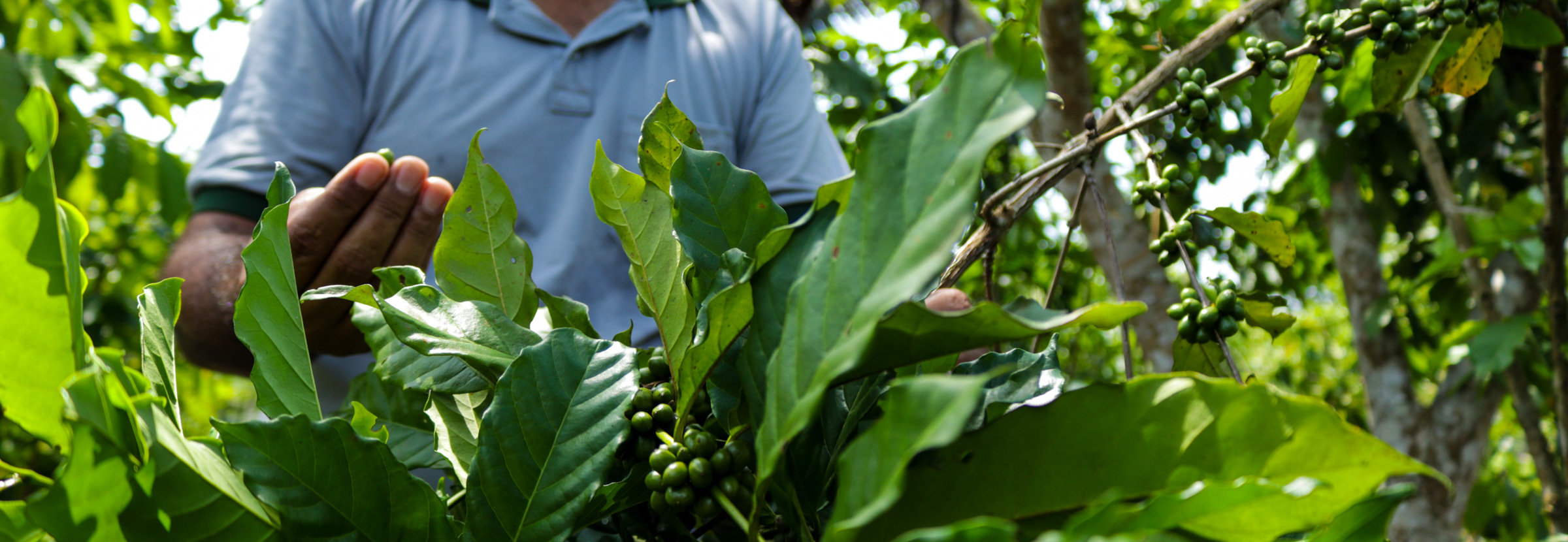Can coffee production in the Amazon be sustainable?
Brazil is the largest producer of coffee in the world. According to data from the United States Department of Agriculture, it will produce 62.6 million 60kg bags of green coffee in 2022/23.
Coffee grows in a number of states and regions of Brazil, but some of the most well-known include Minas Gerais, São Paulo, and Espírito Santo. However, alongside this, small quantities of coffee also grow in the Amazon rainforest – 60% of which is located in Brazil.
For decades now, large-scale agriculture has resulted in high levels of deforestation in the Amazon rainforest. Trees are typically cut down to make space for commercial cattle grazing, as well as large-scale production of crops such as soybean and corn.
In line with this, we have to ask: does coffee production also contribute to conservation issues in the Amazon? And if so, what can be done to mitigate this problem?
To find out, I spoke with Marina Yasbek, Technical Co-ordinator of the Apuí Agroforestry Coffee Project at Idesam, and Fred Pearce, author of The Land Grabbers: The New Fight Over Who Owns the Earth. Read on to learn more about sustainable coffee production in the Amazon.
You may also like our article addressing deforestation in coffee production.
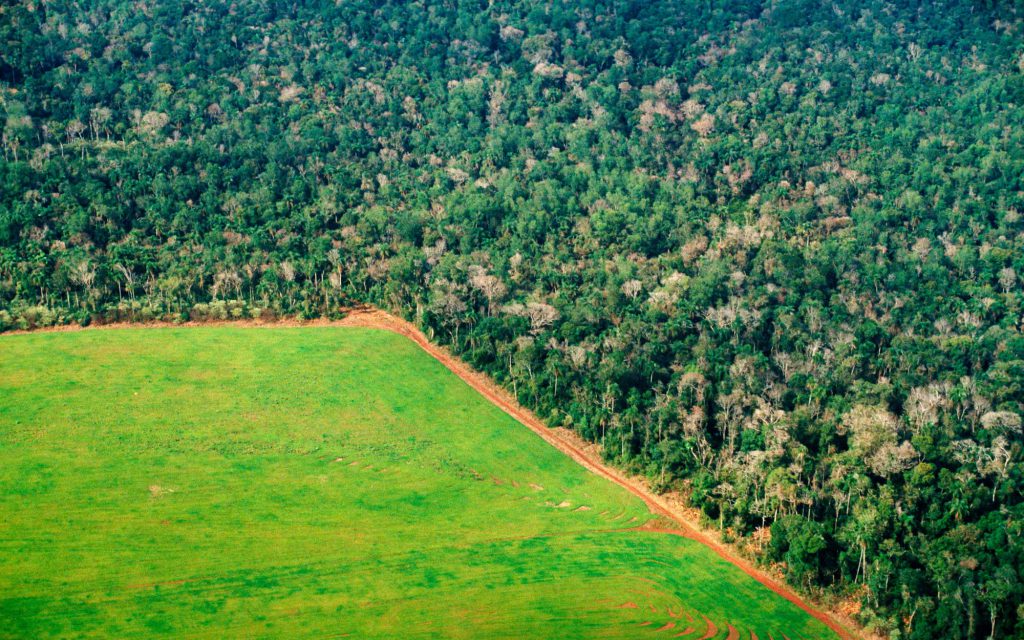
Coffee production and deforestation in the Amazon
Firstly, it’s important to note that cutting down trees can be a form of sustainable forestry in some cases – especially when carried out on a small scale. For example, if smallholder farmers plant trees and then harvest them for wood, they might replant the trees at a later date.
Although it is difficult to accurately determine how much global coffee production contributes to deforestation, there is clear evidence that it occurs in coffee-growing regions, including in Brazil.
By 1820, coffee farms were common in parts of the country, mainly around Rio de Janeiro and São Paulo, as well as the states of Minas Gerais, Espiríto Santo, and the northern regions of Paraná. Over the following two decades, Brazil became the biggest producer of coffee in the world.
Naturally, as part of this, coffee production became much more widespread. This meant large areas of land were cleared to grow coffee plants, which were usually monocropped and grown in full sun conditions – leading to a significant decrease in biodiversity in certain parts of the country.
It’s believed that coffee production was first established in the Amazon rainforest in the 1970s, mostly in areas of the forest located in the state of Rondônia.
“During this time, coffee-growing families migrated here from Southern Brazil, and brought their coffee knowledge with them,” Marina tells me. “Prior to large-scale agriculture taking place, there were many families living in the Amazon who grew crops in harmony with nature.”
Environmental issues in coffee production in the Amazon
As well as coffee production, overall agricultural production increased in the Amazon, which led to a number of environmental issues, including soil degradation and erosion.
Although these issues can be problematic in any region of the world, they are considerably more detrimental when they take place in the Amazon rainforest.
According to the World Wildlife Federation, the Amazon accounts for 10% of all tropical rainforest on the planet. Moreover, it is also home to 10% of all known wildlife species and stores up to 76 billion tonnes of carbon dioxide – which helps to mitigate the effects of climate change.
Between 1985 and 2016, it’s estimated that some 421,774km of the Amazon rainforest were deforested. This reduces the amount of habitable land for thousands of tropical species of animal and plant life, reduces biodiversity, and displaces both indigenous and non-indigenous local communities.
Are there any environmental protection in place?
There have been a number of policies and laws implemented by the Brazilian government to curb deforestation – including the 1965 Forest Code, which was updated in 2012. This law required landowners in the Amazon to maintain between 35% and 80% of their property (depending on the size and location of their land) as native vegetation.
Historically, however, it has been difficult to implement and monitor this policy. As a result, in 2010, all properties in the Amazon rainforest were forced to register with the Cadastro Ambiental Rural (CAR) – a government mapping system used to monitor deforestation.
However, whether these changes have been effective is difficult to accurately determine. Moreover, they can also impact indigenous communities who have been present in the Amazon rainforest for years the most – unfairly displacing them from their native land.
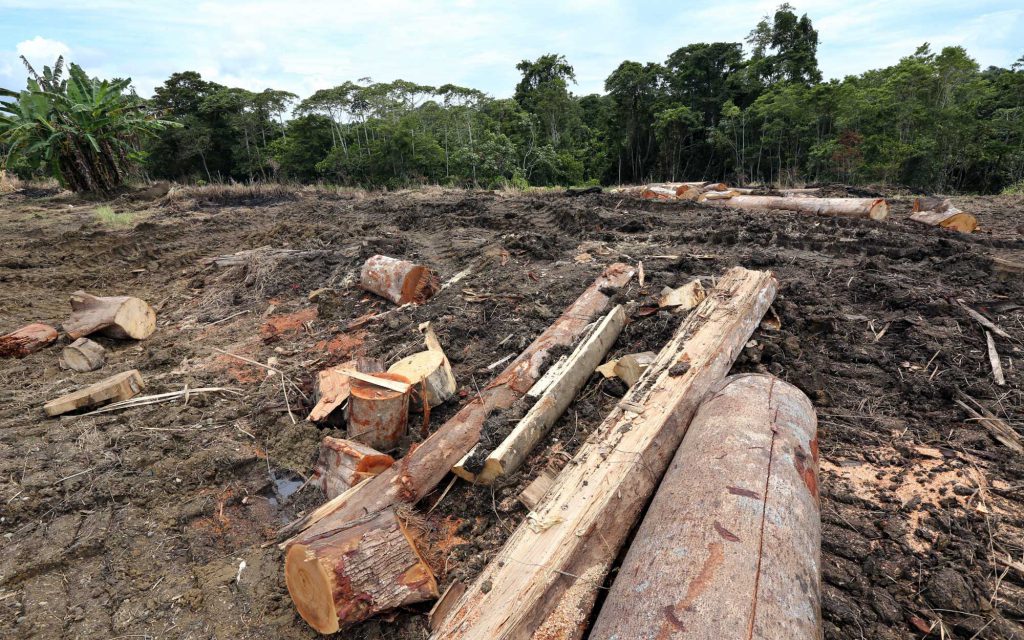
What is land grabbing?
While deforestation has a clear impact on the environment, another key issue is the concept of “land grabbing”.
Essentially, land grabbing is the large-scale acquisition of property and land – usually by domestic or transnational companies, private investors, and governments. The acquired land is then bought or leased, mostly for large-scale agriculture.
Fred tells me that in the Amazon rainforest, land grabbing and deforestation go hand in hand.
“Typically, land and forests (which are usually owned by the state) are cleared for raising cattle,” he says. “The land can also be sold to commercial agricultural companies, including those which grow soy.”
Land grabbing in Brazil can be traced back to a policy in the 1970s which saw the government offer “free” land to mining and farming companies to stimulate economic growth. Since then, it’s estimated that up to 32% of Brazil’s “undesignated public forests” have been land grabbed for private use, including for agriculture.
Undoubtedly, this leads to rising levels of deforestation, environmental damage, and the displacement of indigenous people – including small-scale farming communities who help to conserve local wildlife.
“Land grabbing on state land can be legal, or legally ambiguous, but large areas of forest within indigenous territories are land grabbed illegally,” Fred tells me.
Has land grabbing become more common?
There is also evidence that previous Brazilian governments have made it easier for large-scale companies and investors to grab land. In 2017, the Brazilian government reclassified over 1,000 square miles of land in the southern State of Amazonas as legal to grab. According to research from The Conversation, out of all illegal CAR claims for undesignated public lands and rural settlements in 2014, 94% of them were reclassified as legal in 2017.
Moreover, there is also evidence that between 2018 and 2022, deforestation across Brazil increased under the previous government’s rule. According to Reuters, average deforestation rates in that four-year period rose by some 60% compared to the previous four years.
However, the current government has claimed it will work towards zero deforestation in Brazil. This includes plans to develop a conservation agreement with the Indonesian and Congolese governments – two countries which are also home to some of the largest rainforests in the world. But whether these plans are actually implemented, especially given recent political instability in Brazil, remains to be seen.
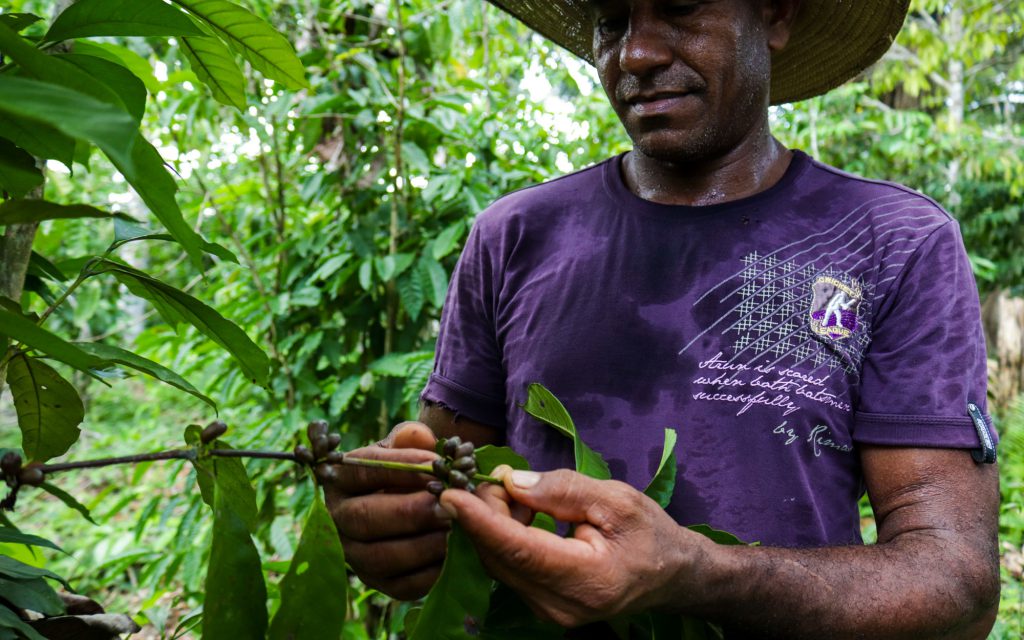
Is coffee production in the Amazon sustainable?
Although most deforestation in the Amazon rainforest is carried out for commercial cattle grazing and agricultural purposes, coffee production is a part of the conversation, too.
For the most part, coffee is grown on a very small scale in the Amazon, which means its environmental impact is much lower compared to large-scale farming. In fact, in some cases, it can even be beneficial to the local ecosystem – especially when farmers use agroforestry methods.
This practice involves growing crops (including coffee) among trees and woodland, which can have a number of benefits to both farmers and the environment.
For instance, agroforestry ensures that coffee plants (and other crops) grow in more shady conditions. This can help to improve soil health and minimise erosion, which in turn can increase yields, as well as coffee quality and flavour.
Moreover, these farming practices provide more natural shelter for local wildlife, which can increase pollination, help to improve soil health, and even create natural systems for pest control.
Agroforestry projects in the Amazon
There are a number of agroforestry initiatives taking place in the Amazon rainforest. One of the first projects established in the region was the Apuí Coffee Project, which launched in 2015. The project is a partnership between the Institute of Conservation and Sustainable Development of the Amazon (Idesam) and 30 coffee-growing families living in Apuí, South Amazonas.
Although coffee production was initially successful in the Amazon, many farmers eventually abandoned their plots because of soil degradation, as well as their lack of access to proper farming equipment.
“Moreover, many local families told us they want to grow coffee again, but the lack of market access and technical assistance means that it’s not profitable for them,” Marina says. “They already have the knowledge to work with coffee, but it needs to be as sustainable as possible.
“As a result, Idesam helped these families to establish agroforestry projects,” she adds. “If you grow coffee using no chemical farming inputs, you can work in harmony with nature.”
Marina adds that these agroforestry practices have also helped local families to grow coffee in a more profitable way, too.
“Some families have achieved organic certification, which can strengthen their branding and marketing,” she explains.
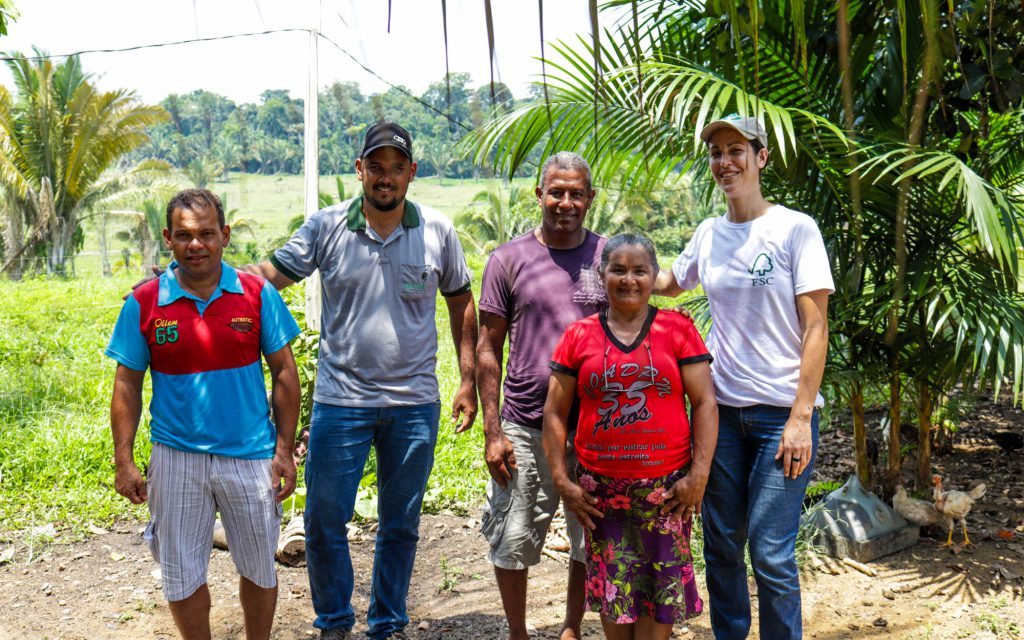
Addressing challenges
Despite the many benefits of agroforestry in coffee production, there are also a number of challenges which farmers in the Amazon have to face.
“Now more than ever, the land in this region has a higher value,” Marina says. “For example, in Apuí, families from other regions of Brazil are trying to buy land here because they want to rear cattle.”
She adds that this is because demand for beef and other meat products is rising in line with population growth and global meat consumption.
Farmers who are part of the Apuí Coffee Project grow 100% robusta, which is better suited to grow in shady conditions at lower altitudes. This can help to improve overall quality, however, Marina says that quality can vary between producers.
To combat this issue, Idesam runs workshops and provides technical assistance to support producers in carrying out farming best practices.
“We sell all the coffee that we grow, but we need more producers to be involved in the work that we do,” she adds. “Coffee production can be an effective way for local and native families to remain on their land, as well as maintaining the forest and wildlife.”
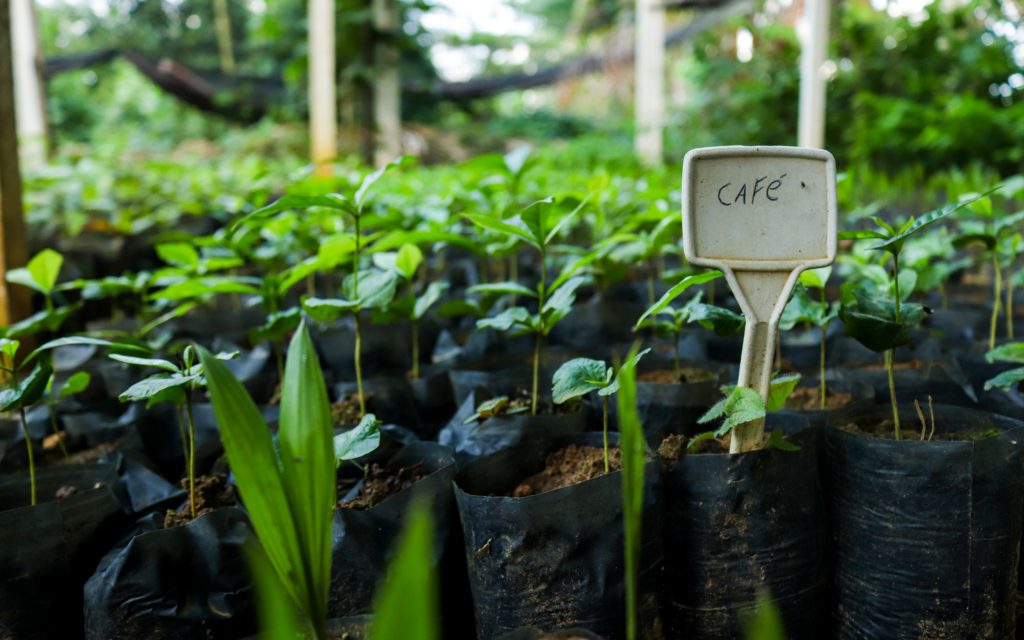
Sustainability continues to be a major focus across the coffee industry, and fighting deforestation is a significant component of this.
Moreover, with the European Union recently agreeing on a new law to ban the imports of goods linked to deforestation, including coffee, it will soon become financially mandatory for coffee companies to ensure they are doing their part.
The impact of this anti-deforestation law on the global coffee sector is monumental, but for some communities involved in coffee production in the Amazon, it is already a reality.
Enjoyed this? Then read our article on environmentally sustainable coffee production & profitability.
Photo credits: Idesam
Perfect Daily Grind
Want to read more articles like this? Sign up for our newsletter!

